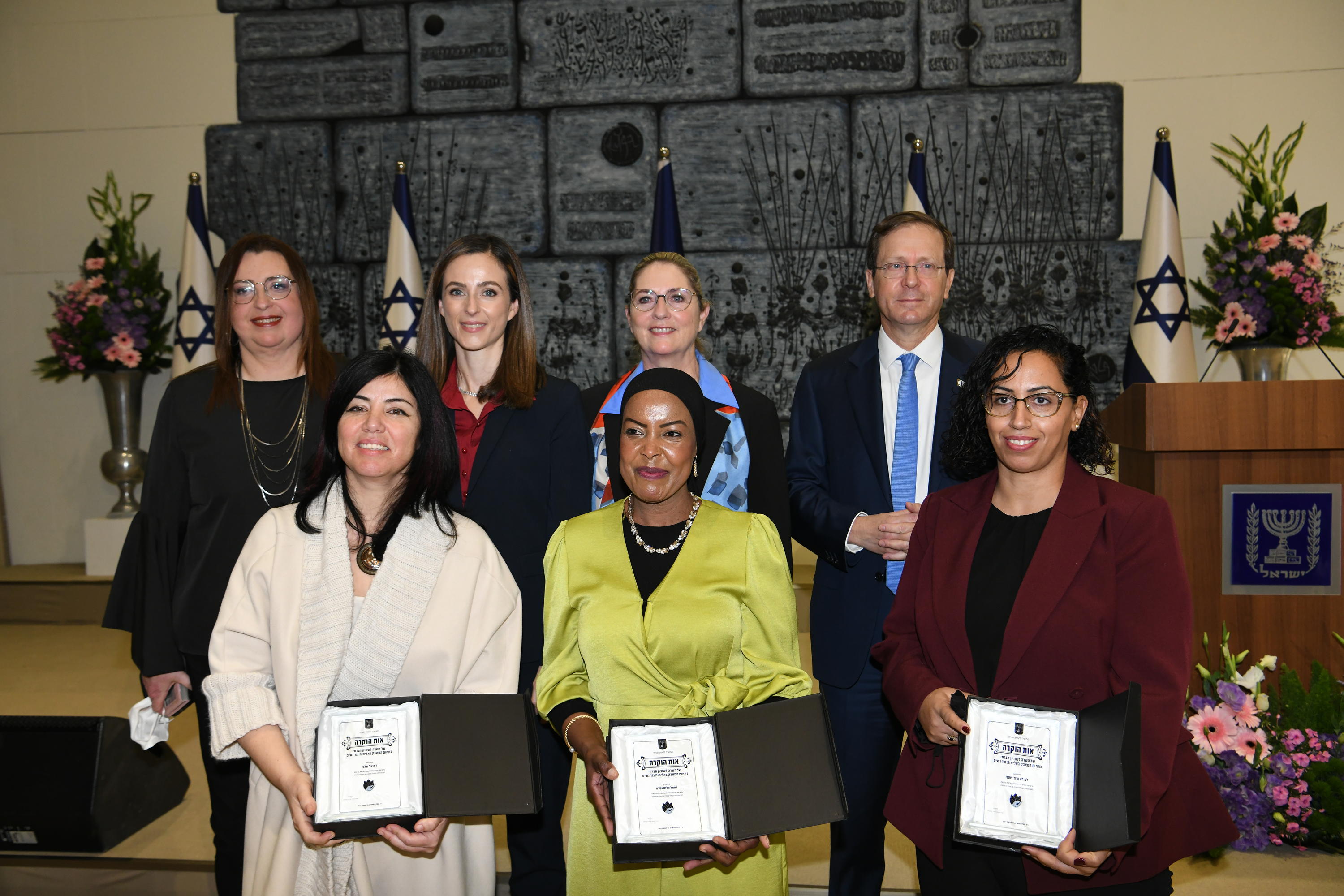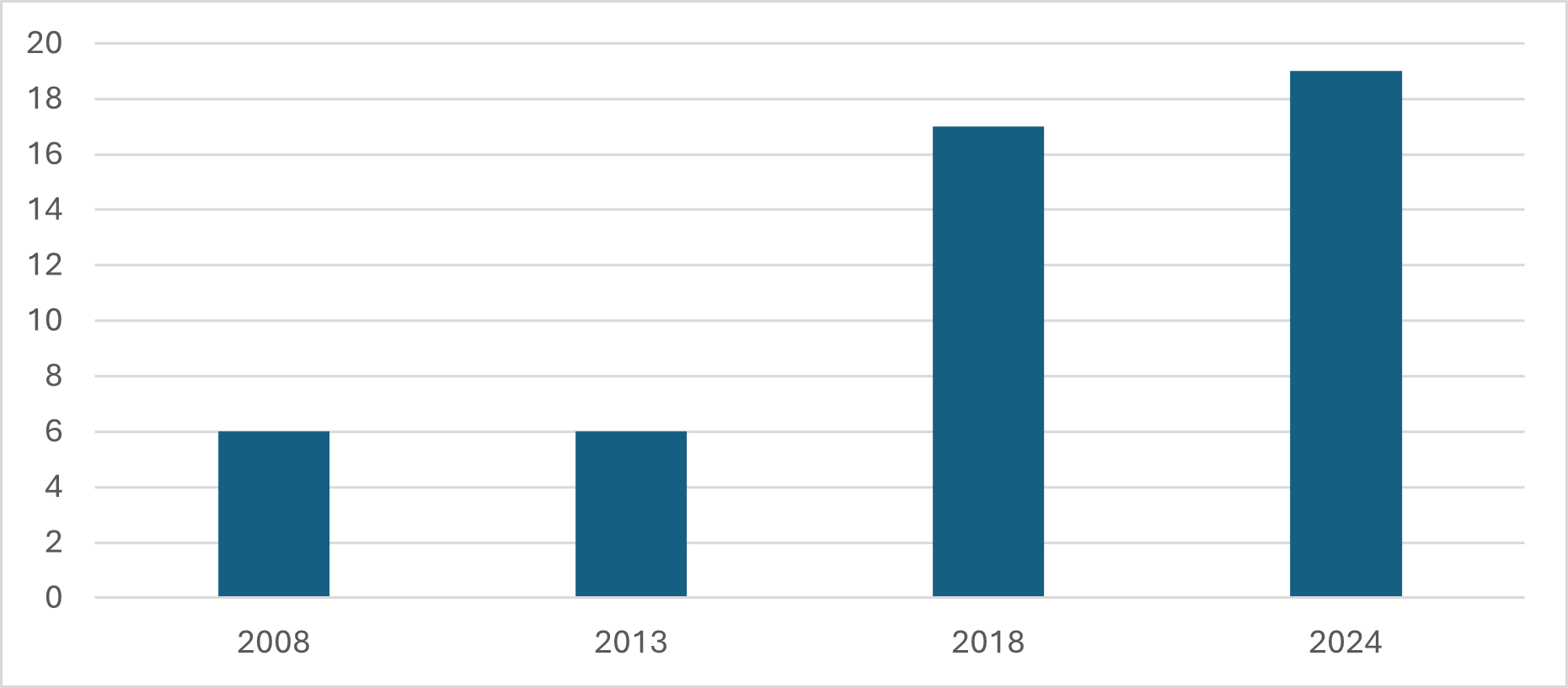Representation of Women in Arab Local Authorities Following the Results of the 2024 Local Elections
The recent municipal elections produced particularly interesting results in Arab local authorities. Below, we examine several aspects of these results relating to the representation of Arab women.

After several postponements, local elections in Israel were held on February 27, 2024. This was a particularly challenging round of elections, held in the shadow of a war that is still being fought, and in the shadow of unbridled violence in Arab society in Israel. The elections produced particularly interesting results in Arab local authorities. Below, we examine several aspects of these results relating to the representation of Arab women.
The number of women elected to serve as council members in Arab local authorities. According to the data published by the Ministry of Interior, 19 Arab women were voted in as council members at the recent elections, serving in 12 different Arab local authorities.[1] These data indicate a certain rise in women's representation, albeit a small one. In the 2013 elections, for example, only six women out of 270 women candidates were elected as council members. Only one woman stood for mayor (in Nazareth), but she was not elected. In the 2018 elections, there was a sizeable increase in the number of women elected as council members in Arab local authorities to 17. As noted, 2024 saw a further rise to 19 women council members, yet the level of representation remains very low: The percentage of Arab local authority council members who are women stood at 0.9% in 2003, rising to 1% in 2013, and since the 2018 elections has remained steady at just 2%.
Number of Arab women elected as council members in Arab local authorities in the last four local elections

This low level of representation stands in stark contrast to the representation of Jewish women in local government, which is still a long way from full equality but reached an all-time high of 28% of all council members in Jewish local authorities following the 2024 elections. Compared to the trend of rising representation of women in Jewish local government, the pace of change in Arab local authorities is extremely slow. In the 2003 elections, Jewish women constituted 14% of council members, rising to 15% in 2008 and then jumping by more than a third to reach 20.3% in the 2013 elections, before climbing further to 23.8% in 2018. As noted, this percentage has now reached 28% after the recent 2024 elections.[2] Thus, women's representation has risen by 8 percentage points in Jewish local authorities since 2013, and by only 1 percentage point in Arab local authorities.
The distribution of representation in Arab local authorities. Four women were elected to serve as members of the Nazareth municipal council—one of the two largest Arab councils, containing 19 members in total—making it the council with the largest number of women. Three parties will be represented on the municipal council, each with at least one council member who is a woman. Hadash (which ran in the local elections under the name of the “Democratic Nazareth Front”) is the outlier with two council members who are women, Sawsan Qubty and Sajeda Muslimane. The local councils of Ein Qiniyye and Jish (Gush Halav) will both feature two women following the elections, and the remaining nine local authorities will have a single woman serving on each of their councils. On the other hand, seven Arab local authorities that each had one council member who was a woman before the elections have been left with no women's representation at all.[3]
Another interesting feature of the 2024 elections was that a Negev Bedouin candidate who was a woman stood for election for the first time, to the Rahat municipal council—Amal Alnsasra. Alnsasra was placed in the fourth slot in the “Rahat for All of Us” list, which won a single seat on the council; Alnsasra’s position in the list did not give her a realistic chance of election. Thus, once again, there will be no women serving as members of councils in Arab local authorities in the Negev, despite the progress of having a woman candidate in an electoral list in the Negev for the first time.
The number of women elected as head of electoral lists. Only once has an Arab woman served as head of an Arab local authority. In 1969, Violet Khoury from Kfar Yassif became the first woman elected to serve on the council of the Kfar Yassif local authority in the Galilee, and in 1974, she became the first woman elected to head an Arab local council. Since then, however, no other women have followed in her footsteps.
At the recent elections, while no women were elected head of a local authority, there were five women who stood as head of electoral lists (some affiliated with parties, some independent) in five different local authorities, all of them in the north:
- Mariam Ouad in Tamra, who was head of the “Altahalof Altamrawi Leltghyeer Jabhat Tamra Aldimokratiya Walmahabah Walmusawah” list
- Dr. Noha Bader, head of the “Democratic Front for Peace and Equality” list in Maghar, was elected for a second term. Badr is the first council member who is a woman in Maghar and has served as deputy mayor.
- Samira Azzam in Isfiya, who was head of the “New Isfiya” list, an independent list that put forward five women as candidates for the council, of whom Azzam was elected for a second term. Azzam was first elected to the local council in 2018, and was the first Druze woman elected from an independent party. She has served as deputy head of the council.[4]
- Aisha Najar in Arraba, head of the independent “Alharak Alshababi” list, was also elected for a second term.
- Eiman Daief in A’ara’ara, who was head of the “Al-Damir Wal-Amal” list.
Despite the presence of these women at the head of electoral lists, it would seem that there is a long way to go before a woman is elected head of a local authority.
Most of the council members who are women were elected for the first time. There were only four exceptions—three of the heads of lists mentioned above (Dr. Noha Badr, Aisha Najar, and Samira Azzam), along with Samyah Abu Alrroub, who was elected as a member of the Nazareth municipal council for the second time.
These elections saw Arab women of varying ages elected to local councils, many of them young women—including Dima Marjieh, 23, who will serve as the youngest woman council member anywhere in Israel (Arab or Jewish) and was elected as the only council member who is a woman in Yafat Al-Nasirah (Yafia).
The large number of party factions in Arab local authorities. Another interesting trend is the large number of party factions that stand in local elections in Arab authorities. There are councils in which all 9, 11, or 13 members are from different parties, and hardly any parties have had more than one representative elected.
The large number of parties can be attributed to several processes in Arab society. The first is polarization, social disintegration, and a lack of social cohesion. This dangerous state of affairs is also reflected in various negative social phenomena, such as violence and crime, and also creates an exclusivist political arena that leaves many groups on the outside, including women and young people and forms a significant barrier to women interested in entering local politics.
Another process relates to the enforced restrictions on Arab society's ability to participate in and influence national politics. Consequently, the local political arena becomes more important and becomes the main political sphere for the Arab population and for the many Arab men interested in participating in politics. This pushes Arab women to the margins of local politics.[5]
The effect of the large number of parties is that it reduces the chances of women being elected to local councils because, in many cases, even when women are feature on lists, they are placed in unrealistic slots and are not elected. In addition, there are more barriers to women standing at the head of a list. When there are many one-person lists standing for election, it is even less likely that women will be placed in high positions in lists.
In conclusion: The 2024 elections did not bring any substantial change in the representation of Arab women in Arab local authorities. The level of representation of Arab women remains low, relative both to their share in the population and to the representation of Jewish women. It would seem that despite a slight and slow increase in Arab representation of women, Arab local government still remains a male arena that marginalizes women, and in every election campaign Arab women are required to attempt to storm the barricades all over again. In addition to the general barriers that prevent women from standing in local elections (both structural and social barriers), Arab women are forced to face additional obstacles—in addition to the violence and crime that have raged in Arab society in recent years, which also affect the ability of women to enter the political arena.
[1] The data presented in this review relate solely to Arab local authorities, and do not include data about representation in the mixed cities.
[2] Tali Heruti-Sover, “Local elections 2024: Record number of women council members in local government, but it’s still not enough,” The Marker, March 10, 2024 [Hebrew].
[3] Tali Heruti-Sover, “Local elections 2024: Record number of women council members in local government, but it’s still not enough,” The Marker, March 10, 2024 [Hebrew].
[4] Itay Mashiach, “Samira Azzam founded a party for women only, and stunned the men around her. She’s not alone,” Ha’aretz, May 5, 2023 [Hebrew].
[5] Suheir Abu Oksa Daoud, “The political representation of Palestinian women in local government in Israel 1950–2003,” Journal of Palestinian Studies 16(62), Spring 2005: 100–125 [Arabic].
